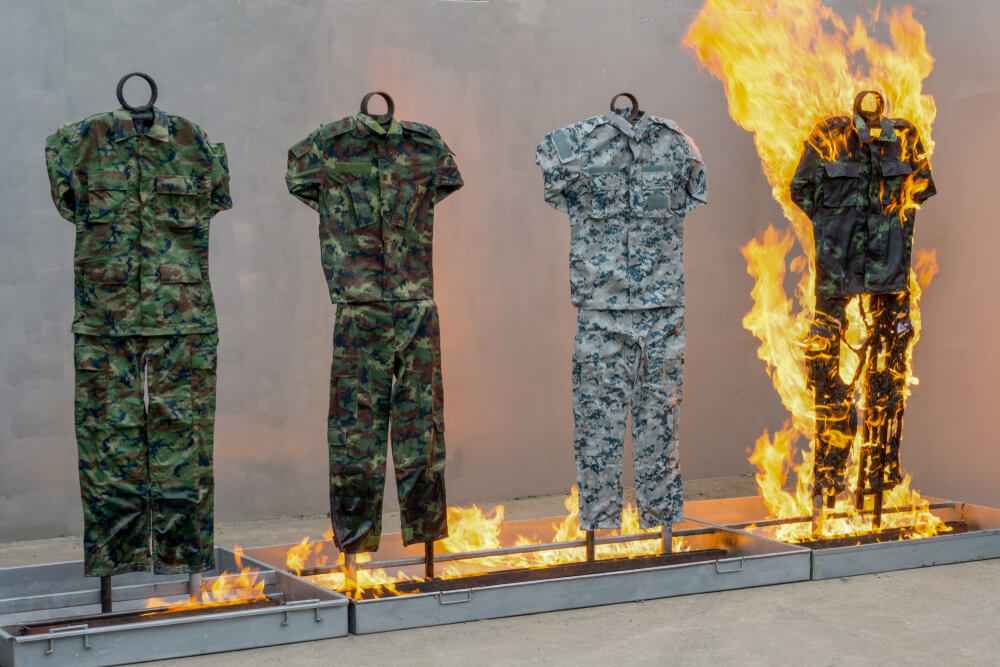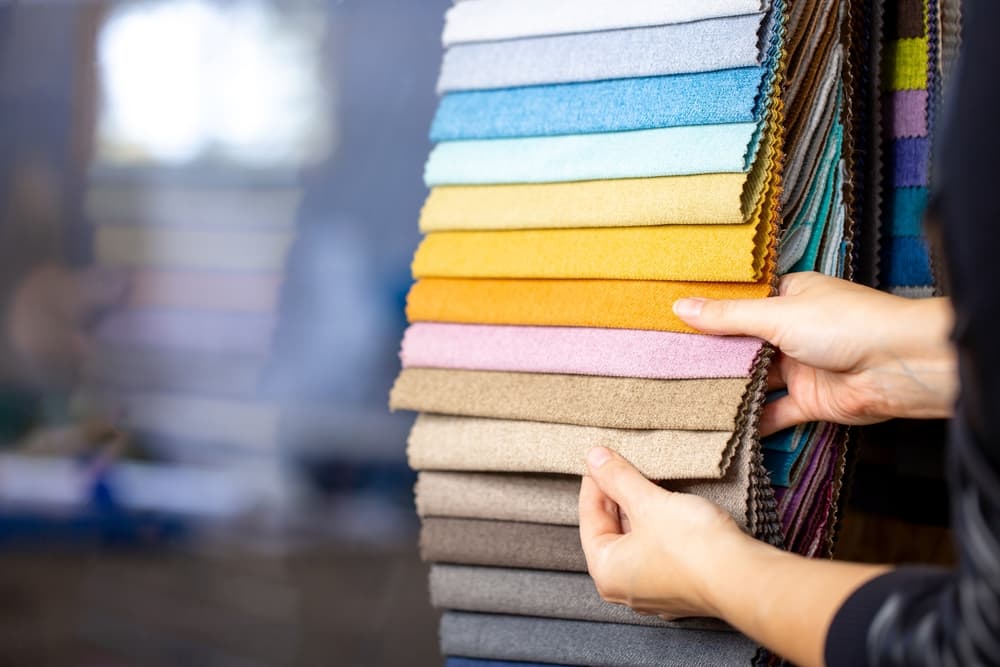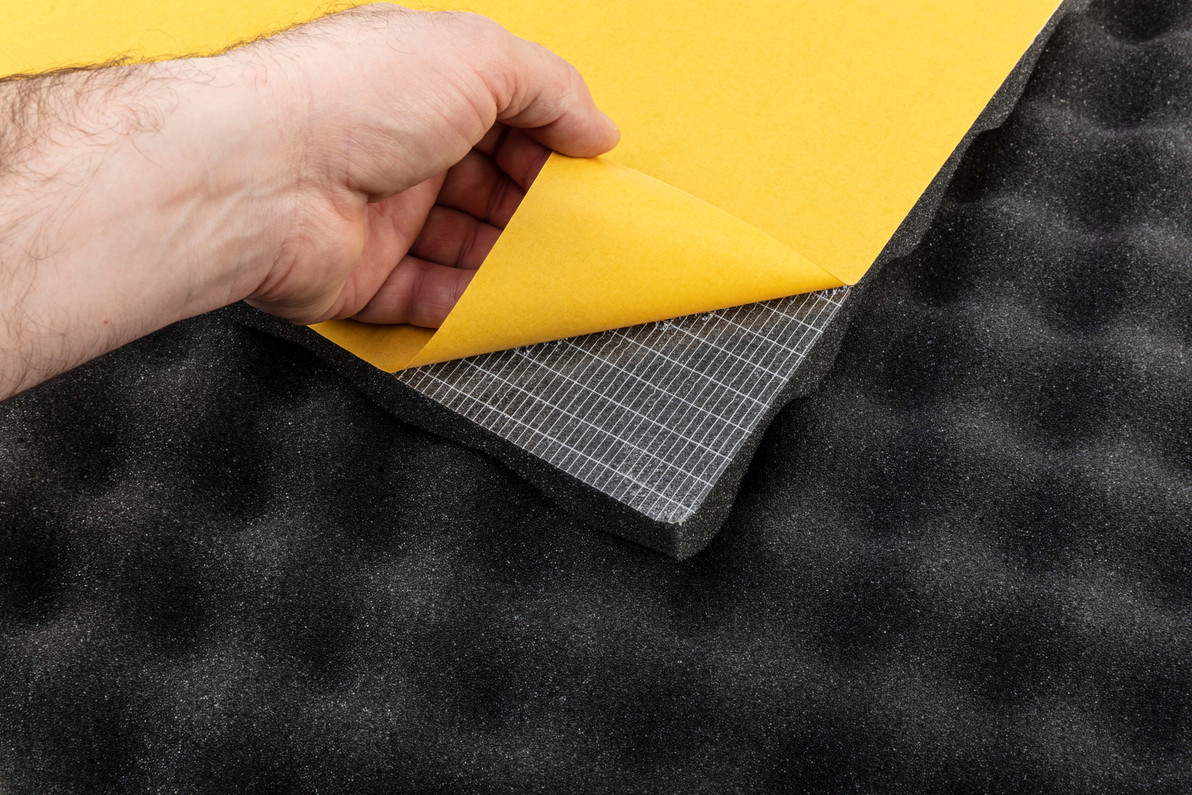Learn How Fabric Can Be Treated With a Fire Retardant
Fabrics and textiles are highly combustible and prone to fire incidents in households, industrial, defense, and manufacturing sectors. As a result, businesses and homeowners across the United States have prioritized how fabric can be treated with fire retardants.
Today, fire retardant chemicals for fabrics are one of the most viable options to prevent them from catching fire.
This blog's major topic is how those fabrics can be treated with flame-retardant chemicals to reduce fires in different industries.
What Are Fire Retardants?

Fire retardants are chemicals that help prevent fire spread in textiles, plastics,building materials, electrical, transportation, and defense.
They can be efficiently applied to synthetic fibers' molecular structures as they transform gases and tars into carbon char, thus decreasing the fabric's burning pace.
Industrial workwear, fireman costumes, contractor attire, painter clothes, and so on all use different fire retardant sprays so the fabric burns slowly.
Chemically speaking, themolecular structures of flame retardants can are classified into the following categories:
Halogenated
Brominated (BRFs), carbon-based, chlorinated, antimony oxide, boron-based, minerals, phosphorus-containing, nitrogen-containing, silicon-based, synergists, and others.
Non-halogenated
Aluminum hydroxide, magnesium Dihydroxide, organophosphorus, and others
What is Fire Retardant Fabric?
Fire retardant fabric is specially treated to resist ignition and slow the spread of flames.Fire retardant fabric resists ignition and slows the spread of flames due to special treatment. It is designed to reduce the risk of fire-related injuries and damage, ideal for use in high-risk environments like industrial settings, firefighter gear, and safety apparel.It reduces the risk of fire-related injuries and damage, ideal for use in high-risk environments like industrial settings, firefighter gear, and safety apparel. It reduces the risk of fire-related injuries and damage, making it ideal for use in high-risk environments like industrial settings, firefighter gear, and safety apparel. Chemicals that alter the fabric's chemical structure treat the fabric, creating a barrier that inhibits combustion. These fabrics provide an added layer of protection, enhancing safety in various applications.
How Can A Fabric Be Treated with Fire Retardant?
The process of treating fabric with fire retardant involves the application of special chemicals to reduce its flammability. Different methods exist for applying these chemicals, including spraying, dipping, or incorporating them into the fabric during manufacturing. The key is to create a barrier that inhibits or delays the ignition and spread of flames when exposed to fire.
One common method involves using chemical treatments like bromine, chlorine, or phosphorous compounds. These substances disrupt combustion, making it harder for the fabric to catch fire or sustain flames. Recent tech advances have produced eco-friendly fire retardants, alleviating worries about conventional chemicals' health and environmental effects. To achieve the best results, following a series of steps to apply and maintain fire retardant on fabric properly is important.
Step 1: Preparation of Fabric
Start by cleaning and drying the fabric to ensure it's free of dirt, oils, or other substances that could interfere with the treatment process.
Step 2: Choosing the Treatment Method
Select the appropriate application method, such as spraying, dipping, or adding fire retardant chemicals directly during fabric manufacturing. Each method is suited for different fabric types and intended uses.
Step 3: Applying the Fire Retardant
Apply the fire retardant using the chosen method, ensuring an even coat. For dipping, the fabric is submerged in the chemical solution, while spraying involves evenly distributing the chemicals onto the fabric's surface.
Step 4: Drying and Curing
Allow the fabric to dry and cure properly to ensure the chemicals bond to the fibers and effectively reduce flammability.
Step 5: Testing the Fabric
Test the treated fabric to ensure its flame resistance. This step confirms the effectiveness of the fire retardant and whether it meets safety standards.
How Long Does Fire Retardant Last on Fabric?
The longevity of fire retardant treatments on fabric depends on various factors, including the type of treatment, application quality, and use frequency. Generally, fire retardancy is not a permanent feature; over time, it may diminish due to wear, washing, or exposure to environmental elements.
The durability of fire retardant treatments can be affected by the quality of the initial application. The quality of the initial application can affect the durability of fire retardant treatments. Fabrics treated with precision and high-quality chemicals will likely maintain their fire-resistant properties for extended periods. However, frequent washing or cleaning, exposure to harsh weather conditions, and abrasion can accelerate the deterioration of these treatments.
Manufacturers often provide guidelines on how to care for fire-retardant-treated fabrics to maximize their lifespan. Following these recommendations, such as using gentle cleaning methods and avoiding harsh chemicals, can prolong the treatment's effectiveness.

Does Upholstery Fabric Need to Be Fire Retardant?
Upholstery fabric plays a significant role in fire safety, especially in homes, offices, and public spaces. Fire-retardant treatments help prevent fabric from igniting easily and slow the spread of flames, reducing fire hazards. In many industries, regulations require upholstery to meet fire safety standards, ensuring enhanced protection. Choosing fire-retardant fabrics can provide added peace of mind and long-term safety benefits.
Fabric Treatment With Fire Retardants
There are two common methods for treating and making fire-resistant fabrics:

Chemical Dipping: The material submerges in a chemical solution that serves as a flame-resistant barrier when absorbed into the fibers. These compounds undergo a chemical reaction when exposed to great heat.
Coating Technique: Textile makers add a fire-retardant back coating to the cloth rather than soaking it. Nonetheless, this procedure renders the fabric rigid and stiff, resulting in less natural-looking drapery.
Many materials are used to treat textiles that come in the form of spray-on fire retardants for fabrics. These are some of the most often used chemicals applied to fabrics:
Kevlar
Twaron
Indura fr cotton
M5 fiber
Nomex
Coated nylon
Carbon Foam
Proban fr cotton
PYROMEX
Pyrovatex fr cotton
Dale Anti flame
Technora
Teijinconex
Lenzing FR
PBI
Carbon X
Kanox
Mazic
Modacrylic
Kermel, etc.
RDR Technologies for All Fire-Retardant Chemical Technologies
Now that you understand what fire retardant materials are, make sure to get them from a reputable vendor.
We collaborate with the nation's leading fire-retardant producers to provide you with a one-stop shop to meet your fire code needs.
If you require a special fire retardant or are unsure which product to buy according to your business field, contact us for an assessment.
Read Next
What Can You Put on Wood Substrate to Make it Fire Resistant?
Is Spray Foam Insulation Fire Retardant?
Learn Why Are Christmas Trees Sprayed With Fire Retardants
What Is in Fire Retardants Dropped From Planes?
Is It Possible to Make Wood Fire Resistant?
Fire vs. Materials: Is Polyester Flame Retardant?
Recent Posts
-
Halloween Decor Safety: Protecting Costumes, Props & Haunted Houses with Fire Retardants
Halloween is one of the most creative holidays of the year. From glowing jack-o’-lanterns to elabora …Nov 5th 2025 -
Cost-Benefits of Investing in Fire Retardant Coatings
In today’s construction and safety-conscious environment, protecting buildings, assets, and people h …Nov 5th 2025 -
Fire Resistant vs Fire Retardant vs Intumescent: What's The Difference
When it comes to fire safety, the terms fire-resistant, fire-retardant, and intumescent are often us …Nov 5th 2025




